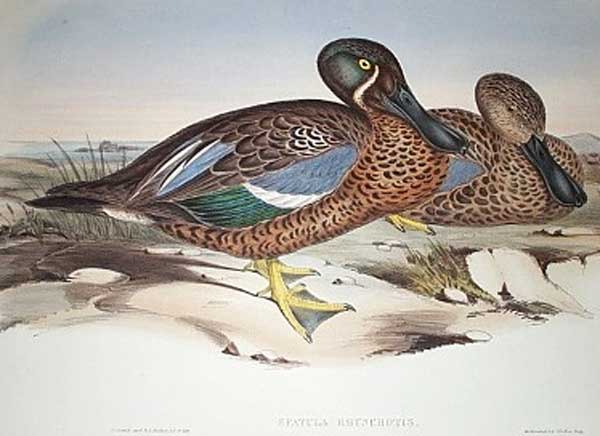
Spatula rhynchotis
Superregnum: Eukaryota
Cladus: Unikonta
Cladus: Opisthokonta
Cladus: Holozoa
Regnum: Animalia
Subregnum: Eumetazoa
Cladus: Bilateria
Cladus: Nephrozoa
Superphylum: Deuterostomia
Phylum: Chordata
Subphylum: Vertebrata
Infraphylum: Gnathostomata
Megaclassis: Osteichthyes
Cladus: Sarcopterygii
Cladus: Rhipidistia
Cladus: Tetrapodomorpha
Cladus: Eotetrapodiformes
Cladus: Elpistostegalia
Superclassis: Tetrapoda
Cladus: Reptiliomorpha
Cladus: Amniota
Classis: Reptilia
Cladus: Eureptilia
Cladus: Romeriida
Subclassis: Diapsida
Cladus: Sauria
Infraclassis: Archosauromorpha
Cladus: Crurotarsi
Divisio: Archosauria
Cladus: Avemetatarsalia
Cladus: Ornithodira
Subtaxon: Dinosauromorpha
Cladus: Dinosauriformes
Cladus: Dracohors
Cladus: Dinosauria
Ordo: Saurischia
Cladus: Eusaurischia
Subordo: Theropoda
Cladus: Neotheropoda
Cladus: Averostra
Cladus: Tetanurae
Cladus: Avetheropoda
Cladus: Coelurosauria
Cladus: Tyrannoraptora
Cladus: Maniraptoromorpha
Cladus: Maniraptoriformes
Cladus: Maniraptora
Cladus: Pennaraptora
Cladus: Paraves
Cladus: Eumaniraptora
Cladus: Avialae
Infraclassis: Aves
Cladus: Euavialae
Cladus: Avebrevicauda
Cladus: Pygostylia
Cladus: Ornithothoraces
Cladus: Ornithuromorpha
Cladus: Carinatae
Parvclassis: Neornithes
Cohors: Neognathae
Cladus: Pangalloanserae
Cladus: Galloanseres
Ordo: Anseriformes
Familia: Anatidae
Genus: Spatula
Species: Spatula rhynchotis
Name
Spatula rhynchotis (Latham, 1801)
Synonymy
Anas rhynchotis (protonym)
Spatula variegata Gould, 1856
Spatula rhynchotis variegata (New Zealand population sometimes considered subspecifically distinct)
References
Supplementum indicis ornithologici sive systematis ornithologiae: lxx.
Proceedings of the Zoological Society of London 24: 95 (Spatula variegata).
Vernacular names
català: Ànec cullerot australià
čeština: Lžičák australský
Cymraeg: Hwyaden lydanbig Awstralia
dansk: Australsk skeand
Deutsch: Australische Löffelente
English: Australasian Shoveler
Esperanto: Aŭstralia kuleranaso
español: Cuchara australiano
فارسی: نوکپهن استرالزی
français: Canard bridé
magyar: Ausztráliai kanalasréce
italiano: Mestolone australiano
日本語: ミカヅキハシビロガモ
Māori: Kuruwhengi
Plattdüütsch: Austraalsche Slubbaante
Nederlands: Australische slobeend
norsk nynorsk: Sigdskeiand
norsk: Sigdskjeand
русский: Австралийская широконоска
svenska: Australisk skedand
Türkçe: Avustralya kaşıkgagası
Tiếng Việt: Vịt mỏ thìa Úc
The Australasian shoveler (Spatula rhynchotis) is a species of dabbling duck in the genus Spatula. It ranges from 46 to 53 cm. It lives in heavily vegetated swamps. In Australia it is protected under the National Parks and Wildlife Act, 1974. They occur in southwestern and southeastern Australia, Tasmania, and New Zealand.[2] The male has a blue-grey head with a vertical white crescent in front of the eyes. The status of the Australasian shoveler is near threatened.
Naming
The common name for the species Spatula rhynchotis is Australasian shoveler no matter which country it is found in. It was previously categorised as two subspecies:
S. rhynchotis rhynchotis Australian shoveler, the nominate race, occurs in southwestern and southeastern Australia and Tasmania.[2]
S. rhynchotis variegata New Zealand shoveler, occurs in New Zealand.[2]
Other names used include: spoonbill, shoveler, spoony, spoonie and shoveller.[3] The Māori name of kuruwhengi is still valid.
The Australasian shoveler was described by the English ornithologist John Latham in 1801.[4]
Courtship and breeding in New Zealand
Courtship in New Zealand starts around August which involves vocalisations from the drake (male) accompanied with head-bobbing whilst swimming toward the duck (female). The most heard vocalisations are from the drakes in the form of a "Sock, sock-sock, sock, sock-sock". Often several drakes will pursue an already paired duck: Generally the mated males are aggressive and will not tolerate this behavior from the bachelors, and fighting may ensue. Courtship flights are common in the morning and evenings mostly, where the duck is followed in a short rapid flight by one or more (usually two) drakes. This tests the speed and agility of the drakes. The duck may be biased in picking the 'winner' in these tests however, especially if she has paired with one of the competitors. She will even sometimes excrete mid-flight on a pursuing male if he is especially not to her fancy. There is a clear and unexplained sex ratio difference with a lot more males to females. This difference is not present in broods of ducklings however. Males with a lot of white breast feathers are not usually paired. These white feathers are often a sign of an older shoveler as first year males almost never have them. Mating will occur as early as August, though nesting rarely happens until at least October.[5]
Footnotes
BirdLife International (2016). "Spatula rhynchotis". IUCN Red List of Threatened Species. 2016: e.T22680243A92852551. doi:10.2305/IUCN.UK.2016-3.RLTS.T22680243A92852551.en. Retrieved 12 November 2021.
Clements, J. (2007)
"Australasian shoveler". New Zealand Birds Online. 2013. Retrieved 21 October 2014.
Latham, John (1801). Supplementum indicis ornithologici sive systematis ornithologiae (in Latin). London: Leigh & Sotheby. p. lxx.
J. J. Holland. New Zealand Shoveler Observations. 2009
References
Clements, James, (2007) The Clements Checklist of the Birds of the World, Cornell University Press, Ithaca
Retrieved from "http://en.wikipedia.org/"
All text is available under the terms of the GNU Free Documentation License

